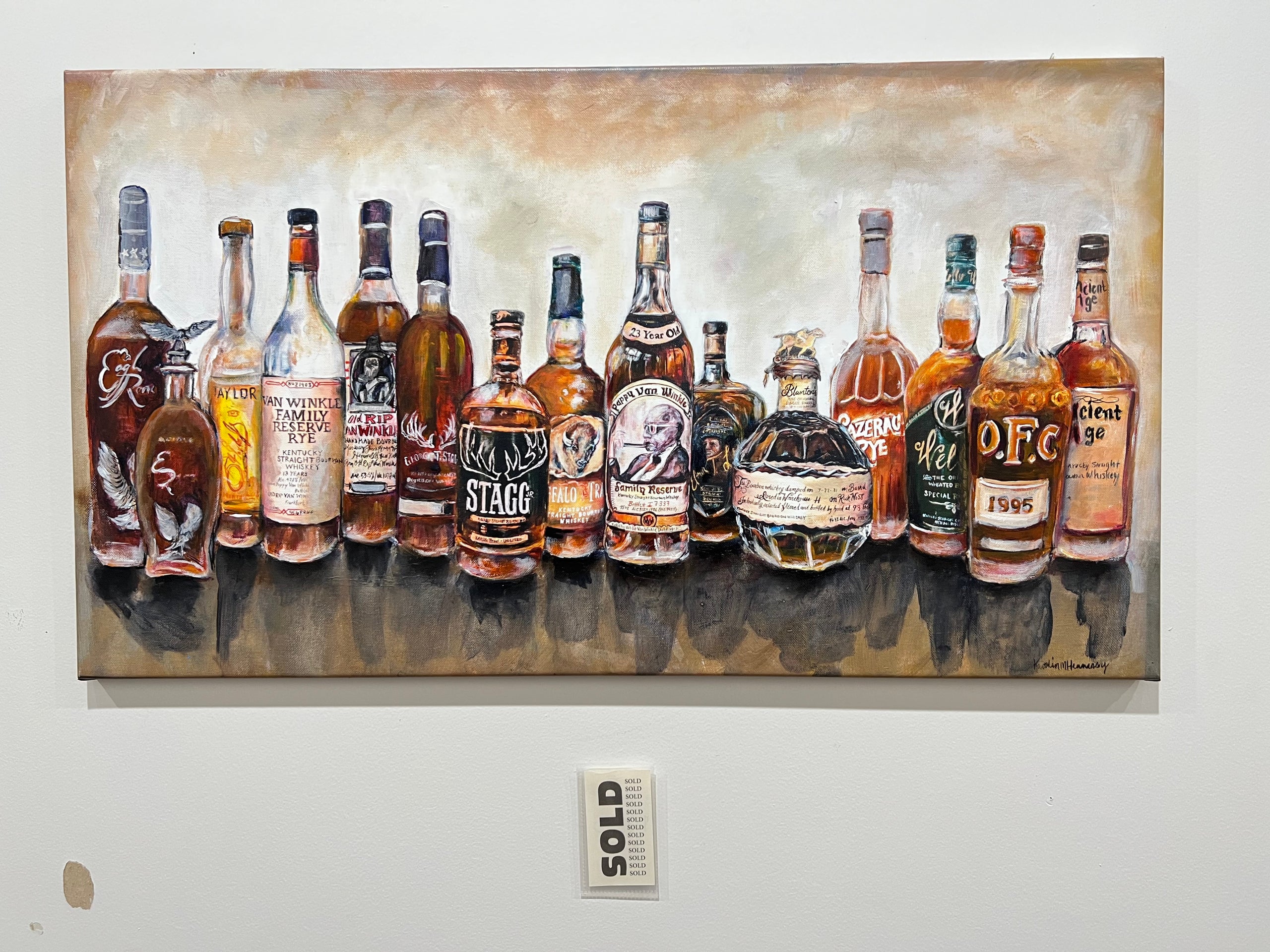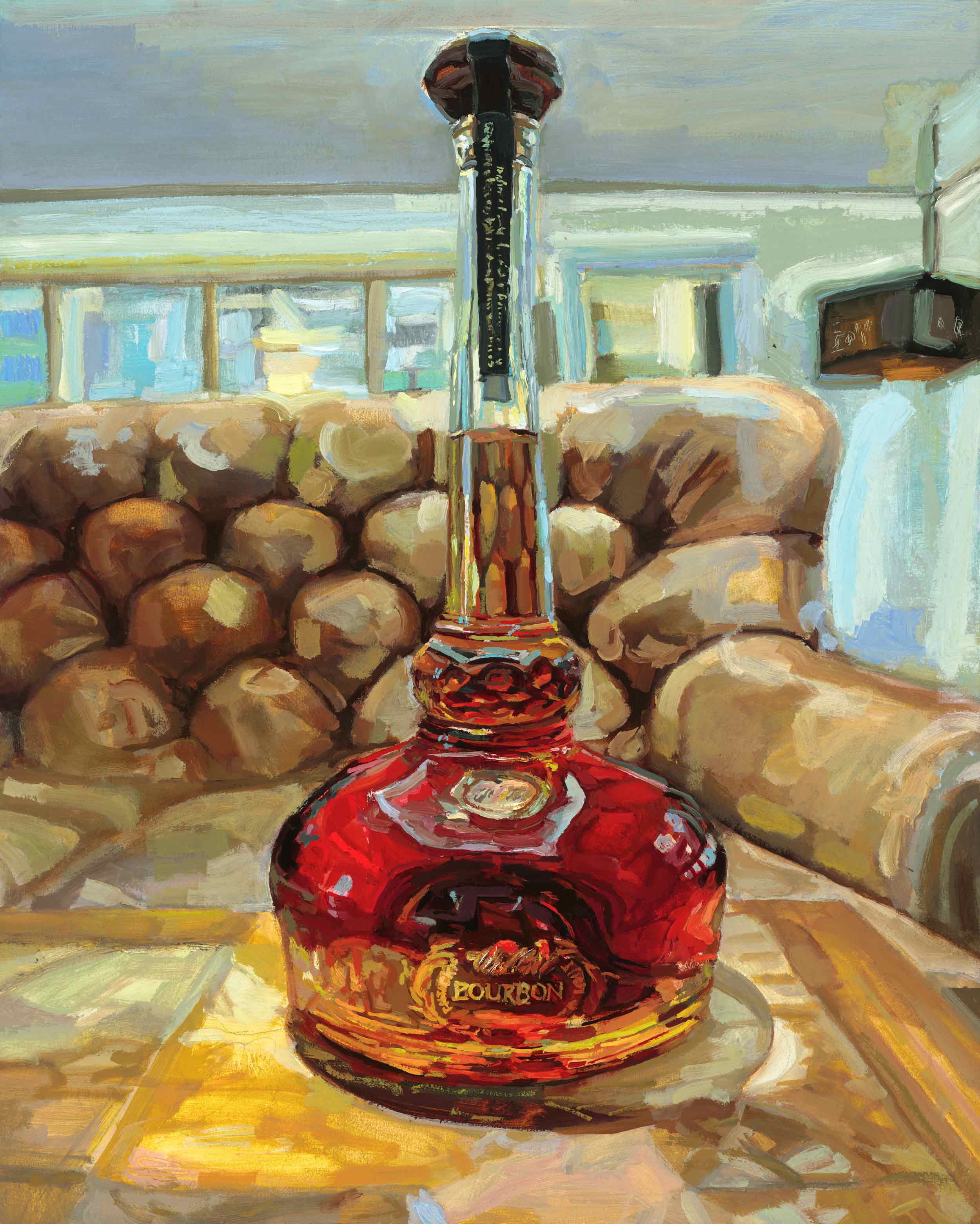Limited Edition Bourbon Art: Why Collectors Are Gathering to Distinct Finds
Limited Edition Bourbon Art: Why Collectors Are Gathering to Distinct Finds
Blog Article
The Relevance of Whiskey Art in Celebrating Heritage and Craftsmanship in the Beverage Sector
The intricate relationship in between whiskey art and the party of heritage and craftsmanship within the beverage sector can not be overemphasized. Via attentively developed bottles and tags, bourbon brands encapsulate their historic origins and the artisanal skills that define their production approaches. This artistic measurement not only boosts market charm yet likewise works as a conduit for social storytelling, fostering a much deeper connection between the consumer and the craft. As we check out the different facets of this subject, appealing inquiries regarding the influence of modern-day trends on conventional techniques emerge, prompting more examination.
The Historic Origins of Whiskey
At the heart of scotch's appeal exists a rich tapestry of historical origins that trace back to old human beings. The origins of bourbon can be connected to the purification practices of the Sumerians and Babylonians around 2000 BCE, where early kinds of fermented grain drinks began to arise. Nonetheless, it was in the Center Ages that the art of distillation advanced substantially, particularly in Ireland and Scotland, leading to the development of bourbon as we recognize it today.
The term "scotch" itself acquires from the Gaelic word "uisce beatha," suggesting "water of life." This expression emphasizes the social significance of scotch in Celtic societies, where it was frequently connected with routines, celebrations, and communal bonding. By the 15th century, purification became an acknowledged craft within monastic communities, leading the way for the facility of legal distilleries.
As trade courses increased, whiskey's appeal grew, going beyond regional borders and capturing the rate of interest of lovers worldwide. Bourbon Art. This historic trip mirrors not just the workmanship behind scotch production but likewise its important function in cultural and social contexts, noting it as a substantial beverage throughout history
Artistic Expression in Branding
Whiskey branding stands as a compelling intersection of creativity and commerce, where aesthetic identification plays a vital duty in forming customer understanding. The appearances of scotch labels, packaging, and marketing products reflect not just the brand's story yet also its core values and heritage. With creative expression, distilleries share a story that reverberates with consumers, stimulating emotions and triggering links.
Making use of color, typography, and images in branding offers to separate products in a saturated market. Traditional motifs may stimulate a feeling of authenticity and craftsmanship, while contemporary styles can signify advancement and forward-thinking. This strategic artistic direction improves brand name recognition and loyalty, enabling consumers to create an individual connection with the bourbon they select.
Moreover, artistic expression in branding frequently acts as a party of regional heritage. Distilleries regularly incorporate regional icons or historical recommendations into their layouts, producing a local color that invites consumers to take part in a wider social experience. Ultimately, the creativity behind whiskey branding not only boosts aesthetic charm however also improves the total narrative of the brand name, cultivating a much deeper gratitude for the craftsmanship and heritage embedded in each bottle.
Craftsmanship in Container Layout
The creativity noticeable in bourbon branding extends past aesthetic identity to incorporate the craftsmanship associated with container design. Each container functions as a vessel not just for the spirit within, but also for the tale it tells about its custom, origin, and high quality. The design process calls for thorough interest to detail, as components such as shape, material, and closure add significantly to the overall understanding of the bourbon.
Workmanship in container layout entails picking top notch glass that can improve the bourbon's color and clarity, while also supplying a tactile experience for the consumer. The silhouette of the bottle have to be both cosmetically appealing and functional, commonly reflecting the heritage of the brand. Lots of distilleries select one-of-a-kind shapes or embossed logos that evoke a feeling of credibility and history.
Additionally, the tag design and typography play an essential role in connecting the brand name's story. Realism Art. A well-crafted bottle not just captivates the customer's eye yet also strengthens the brand name's dedication to top quality and custom. This way, the workmanship of container layout ends up being an important facet of the bourbon experience, merging virtuosity with an extensive regard for heritage
Cultural Significance of Scotch Art
Commemorating practice and craftsmanship, the social value of scotch art goes beyond simple appearances, linking with the social and historical narratives of the regions from which it originates. Each bottle serves as a canvas, portraying the one-of-a-kind tales, mythology, and practices that have actually formed local whiskey-making methods. The elaborate styles often mirror the heritage of the distillers, including icons and concepts that resonate with the culture and worths of their communities.

In addition, scotch art plays an important duty in common gatherings and parties, offering as a substantial web link in between people and their shared experiences. By valuing the helpful resources artistry in scotch product packaging, customers cultivate a much deeper understanding and regard for the craft, inevitably enhancing their pleasure of the beverage itself.
Modern Trends in Whiskey Discussion
In the last few years, the discussion of bourbon has evolved to mirror contemporary tastes and fads while still honoring traditional craftsmanship - Whiskey Art. Distilleries are progressively concentrating on visual components that enhance the total alcohol consumption experience, bridging the void in between heritage and modernity
Cutting-edge bottle styles have arised, often including lasting materials and artistic labels that inform compelling stories. Numerous brands currently work together with regional artists, instilling their items with distinct aesthetic expressions that reverberate with customers. Furthermore, limited-edition releases are usually packaged in collectible containers, including worth and allure for aficionados.

Conclusion
In verdict, bourbon art acts as an important channel for revealing the heritage and workmanship inherent in the beverage industry. Via complex branding, cutting-edge bottle designs, and culturally significant imaginative aspects, bourbon brand names effectively recognize their customs and get in touch with customers. This artistic story not only raises the gratitude of bourbon however also enhances neighborhood identification and pride amongst producers. Ultimately, scotch art plays a vital role in preserving and commemorating the abundant social tapestry of whiskey-making.


Workmanship in bottle design involves imp source selecting premium glass that can improve the bourbon's shade and quality, while additionally offering a tactile experience for the consumer. In this way, the craftsmanship of bottle style comes to be a crucial aspect of the whiskey experience, combining virtuosity with an extensive respect for heritage.
In conclusion, whiskey art offers as an essential avenue for sharing the heritage and craftsmanship fundamental in the beverage industry.
Report this page